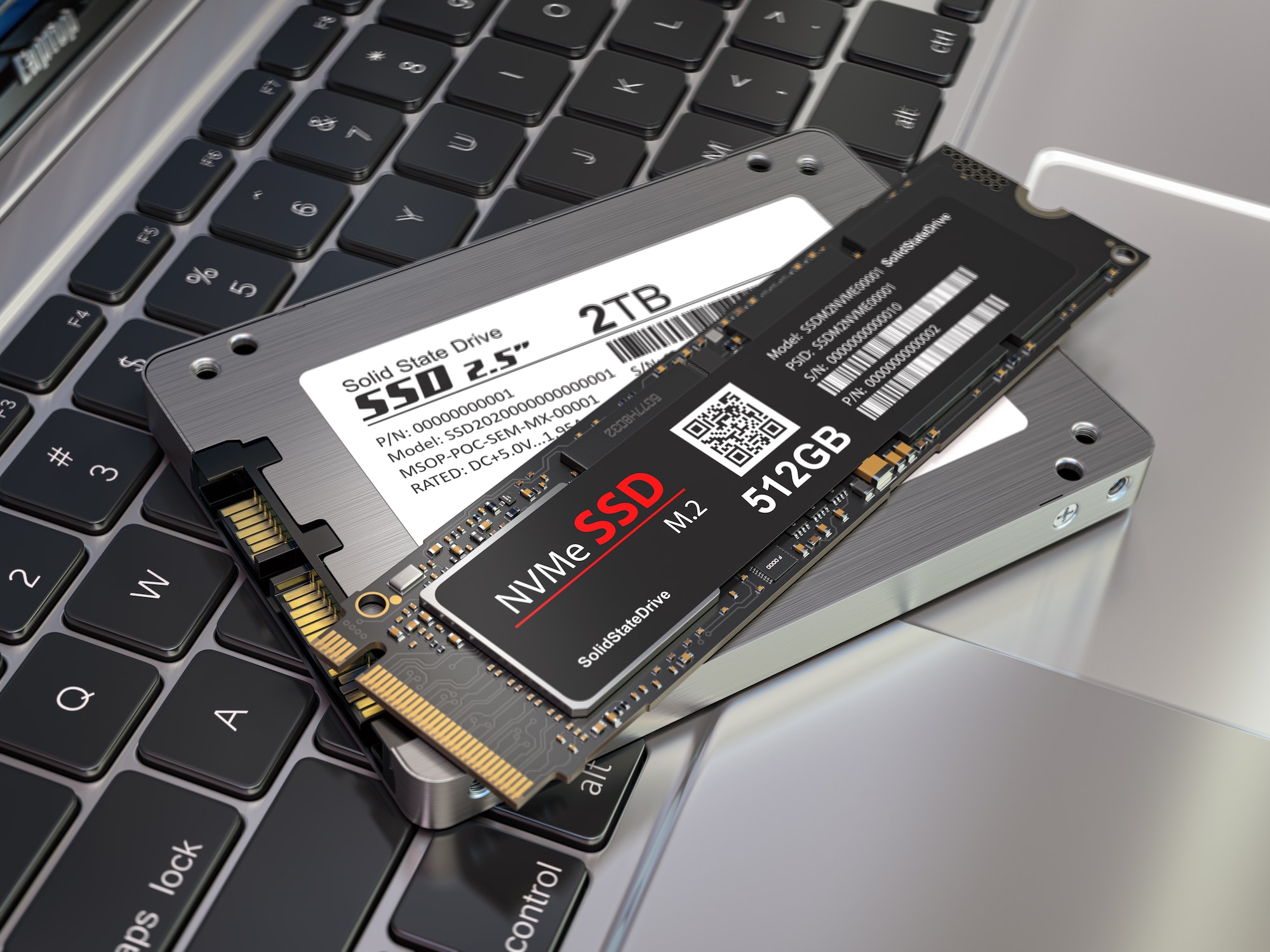SSD for Digital Nomads

As a digital nomad, selecting the right storage solution for your work and personal files is crucial. Solid-state drives (SSDs) are a popular choice, offering several advantages over traditional hard drives with a good mix of speed, weight and durability for most users. Read on as we describe general benefits of SSDs, compare current types of SSDs, and help you determine the best storage solution for your individual needs as a digital nomad.
1. NVMe vs. Older SSDs vs. Spinning Disks
Ignoring ancient computer history, there are three primary types of storage drives: NVMe SSDs, older SSDs, and spinning disks. Each may have a place in your kit but it is important to consider relative advantages and disadvantages:
- NVMe SSDs are the newest and fastest type of SSD, offering significantly faster read and write speeds compared to older SSDs. They connect directly to your computer’s motherboard, providing lower latency and higher performance. Learn more about NVMe SSDs in our article NVMe is Faster SSD.
- Older SSDs (SATA SSDs) are still faster than spinning disks but have slower speeds compared to NVMe SSDs. They use the same interface as spinning disks but offer better performance due to their lack of moving parts.
- Spinning disks (HDDs) are the oldest and slowest type of storage. They use spinning platters and a moving read/write head, making them more susceptible to damage, especially when on the move.
2. Speed, Weight, and Cost Trade-offs
When choosing an SSD, it’s essential to consider the trade-offs between speed, weight, and cost:
- Speed: NVMe SSDs provide the fastest performance commonly available today but may be overkill for many users. If your work doesn’t require high-speed storage, a SATA SSD may be more than sufficient. For the most demanding uses, devices adhering to the USB 3.2 Gen 2×2 standard can deliver up to 2000 MB/s performance at capacities up to 4TB (8TB expected soon). Less demanding uses will typically find devices adhering to the older USB 3.2 standard delivering up to 1000 MB/s sufficient at similar capacities and lower cost.
- Weight: SSDs are generally lighter than spinning disks, making them a better choice for digital nomads concerned about carrying weight while traveling.
- Cost: NVMe SSDs are typically more expensive than SATA SSDs and spinning disks. Consider your budget and storage needs when selecting a drive. If price and weight are less important than capacity, older HDD technology can offer higher capacity portable drives at a lower cost, typically following the USB 3.0 standard in capacities up to 5TB for portable units and up to 16TB or more with external power.
3. Bandwidth Requirements for 4K and 8K
Digital nomads working with high-resolution video (4K and 8K) need to consider the bandwidth requirements of their storage solutions. Faster SSDs (such as NVMe) can handle large video files and high bitrates more efficiently, reducing buffering and lag when working with these files.
4. Hours of Recording per Terabyte
When determining your storage needs, consider how many hours of video or audio recording you’ll be storing on your drive. As a rough estimate, 1TB of storage can hold approximately:
- 250 hours of 4K video at 30fps (compressed)
- 50 hours of 8K video at 30fps (compressed)
Keep in mind that these estimates can vary depending on the codec and compression settings used.
5. Determining Your SSD Size Requirements
To choose the right SSD capacity for you, use your workflow as a guide, identify the types of files you use, then determine how much storage you’ll need locally for your files vs how much could reasonably live in cloud storage. Most should focus on videos, photos and music but include any other format of note for your needs. For most digital nomads, a 512GB or 1TB SSD should be sufficient, but those working with large video files or extensive software libraries may require more storage.
Additional Resources
Explore these additional articles to help you choose the right storage solution for your digital nomad lifestyle:
In conclusion, selecting the right SSD for your digital nomad lifestyle is essential to ensure a smooth workflow and keep your files safe while on the move. By understanding the differences between NVMe SSDs, older SSDs, and spinning disks, along with your unique sweet spot for a balance of speed, weight, cost, and storage requirements, you can make an informed decision that suits your specific needs.
Ready to explore more topics related to digital nomad life? Check out our other articles on Have Laptop, Will Travel, Address TBD, Communication on the Go, Migrating On-Premise to Cloud, and Remote Work Lifestyle.

Leave a Reply
You must be logged in to post a comment.